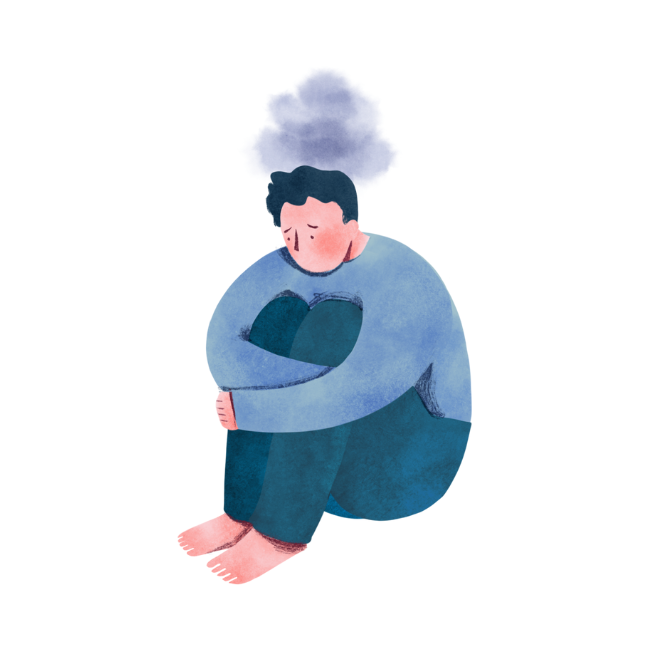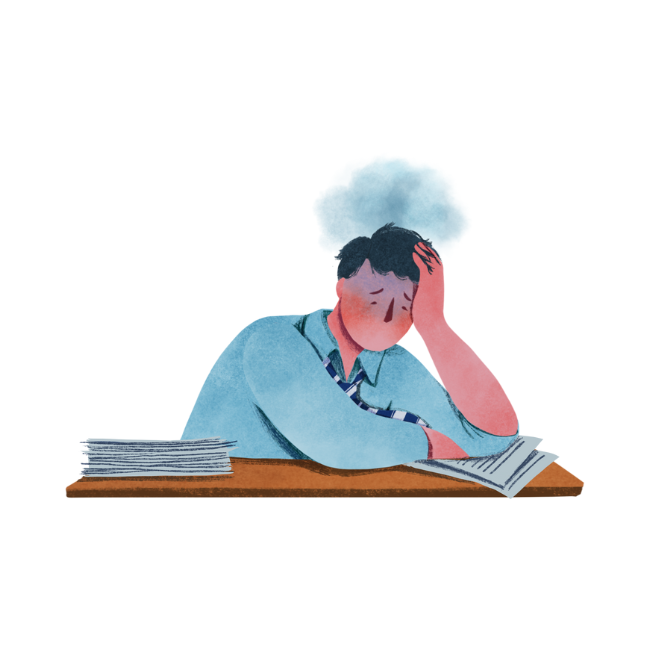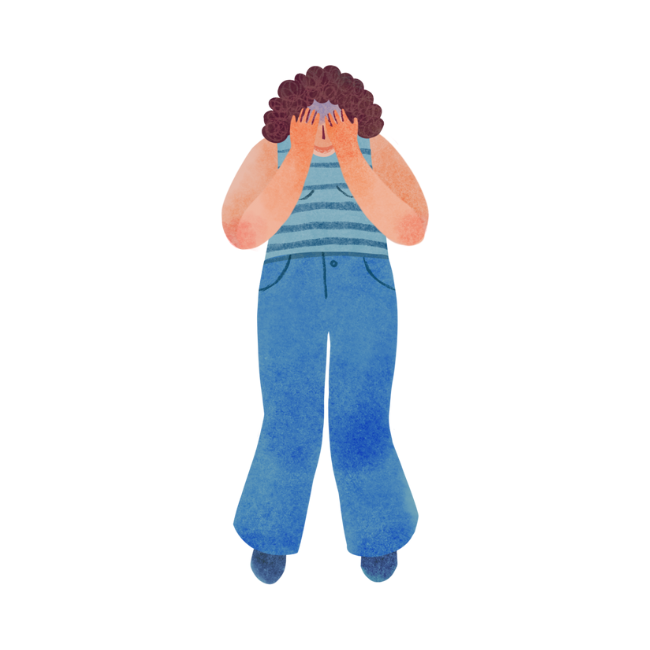Top Mental Health Disorders That Often Go Undiagnosed

Stigma leads to people feeling reluctant when seeking medical help or treatment. And, due to the stigma surrounding mental health, those with a mental disorder live with their symptoms for long periods which often go undiagnosed and untreated. However, professionals say that undiagnosed mental health issues will only get worse.
So, the sooner the patient is diagnosed and begins treatment, the better. Affecting over 450 million people worldwide, mental illnesses can also be life-threatening. Experts even said that 2020 is projected to overtake all physical diseases as a more recurrent cause of disability.
According to the World Health Organization’s report on Prevention and Management of Mental Health Conditions in the Philippines.
Most mental health conditions remain treatable. However, the challenge comes with the confidence in seeking medical help.
These determinants include income, employment status, educational level, material standard of living, and also physical health, and exposure to adverse life events. Aside from that, natural disasters and civil conflict, sexual violence, child abuse, and neglect are also included under these determinants.
Mental health social implications include discrimination, violence, alcohol abuse, stigma, and suicide among others. Economic impacts, on the other hand, include lost productivity at work and healthcare treatment costs among others.
Top Mental Health Disorders That Often Go Undiagnosed
Generalized Anxiety Disorder

Generalized anxiety disorder can be hard to recognize. There are even people who wonder if their anxiety is normal or whether or not they have an anxiety disorder. Basically, GAD affects the way a person thinks. It is marked by excessive, exaggerated anxiety, and worry about everyday life events for no obvious reason. People with symptoms of GAD tend to always expect disaster and can’t stop worrying about health, money, family, work, or school.
Symptoms include:
- excessive, ongoing worry, and tension
- unrealistic view of problems
- restlessness
- trouble concentrating
- tiring easily or being fatigued
- increased crankiness or irritability
- trouble sleeping
- muscle tension or aches and soreness
Clinical Depression

Depression ranges in seriousness from mild, temporary episodes of sadness to severe, persistent depression. Also known as major depression or major depressive disorder, clinical depression is the more severe form of depression. Of course, it can affect people of any age, including children. Thankfully, if diagnosed, clinical depression usually improves with psychological counseling, antidepressant medications, or a combination of the two.
Symptoms include:
- feelings of sadness, tearfulness, emptiness, or hopelessness
- angry outbursts, irritability or frustration, even over small matters
- loss of interest or pleasure in most or all normal activities and hobbies
- sleep disturbances (insomnia or sleeping too much)
- tiredness and lack of energy; small tasks take extra effort
- reduced appetite and weight loss; or increased cravings for food or weight gain
- anxiety, agitation, or restlessness
- slowed thinking, speaking, or body movements
- feelings of worthlessness or guilt, fixating on past failures, self-blame
- trouble thinking, concentrating, making decisions, and remembering things
- recurrent thoughts of death, suicidal thoughts, suicide attempts, or suicide
- unexplained physical problems, such as back pain or headaches
Bipolar Disorder

Bipolar disorder, formerly called manic depression, is a mental health condition that causes extreme mood swings. This includes emotional highs like mania or hypomania and lows like depression. Mania and hypomania, moreover, are two distinct types of episodes. However, they have the same symptoms. Mania remains more severe than hypomania, causing more noticeable problems at work, school, and social activities, as well as relationship difficulties. Mania, on the other hand, triggers a break from reality (psychosis) and requires hospitalization.
Both manic and hypomanic episodes include three or more of these symptoms:
- abnormally upbeat, jumpy, or wired
- increased activity, energy, or agitation
- an exaggerated sense of well-being and self-confidence (euphoria)
- decreased need for sleep
- unusual talkativeness
- racing thoughts
- distractibility
- poor decision-making
Obsessive-Compulsive Disorder

Obsessive-Compulsive Disorder (OCD) remains a common, chronic, and long-lasting disorder. This includes has uncontrollable, reoccurring thoughts (obsessions) and/or behaviors (compulsions) that they feel the urge to repeat over and over. Obsessions, then, include repeated thoughts, urges, or mental images that cause anxiety.
These include:
- fear of germs or contamination
- unwanted forbidden taboo thoughts involving sex, religion, or harm
- aggressive thoughts towards others or self
- having things symmetrical or in a perfect order
Compulsions, on the other hand, remain repetitive behaviors that a person with OCD feels the urge to do in response to an obsessive thought.
Common compulsions include:
- excessive cleaning or handwashing
- ordering and arranging things in a particular, precise way
- repeatedly checking on things, such as repeatedly checking to see if the door is locked or that the oven is off
- compulsive is counting
Patients with OCD can’t control their thoughts or behaviors, even when those thoughts or behaviors remain recognized as excessive. They would also spend at least one hour a day on these thoughts or behaviors. They also don’t get pleasure when performing the behaviors or rituals. However, they may feel brief relief from the anxiety the thoughts cause. Then, they would experience significant problems in their daily life due to these thoughts or behaviors.
Post-Traumatic Stress Disorder

Post-traumatic stress disorder (PTSD) is a disorder that develops in some people who have experienced a shocking, scary, or dangerous event. Although it remains natural to feel afraid during and after a traumatic situation, patients who have PTSD experience a range of reactions, after trauma.
Those who continue to experience problems may be diagnosed with PTSD. Not everyone with PTSD had gone through a dangerous event. Some people also develop PTSD after a friend or family member experiences danger or harm. Meanwhile, this could come after the sudden and unexpected death of a loved one.
Traumatized people experience short-term symptoms. However, the majority do not develop ongoing and chronic PTSD. Symptoms usually begin early, within three months of the traumatic incident. But, sometimes, they begin years afterward.
Doctors usually diagnose patients with PTSD, if they have all the following for at least one month:
- one re-experiencing symptom
- one avoidance symptom
- two arousal and reactivity symptoms
- two cognition and mood symptoms
Re-experiencing symptoms include:
- flashbacks which relive the trauma over and over, including physical symptoms like a racing heart or sweating
- bad dreams
- frightening thoughts
Avoidance symptoms, on the other hand, include:
- staying away from places, events, or objects that remind them of traumatic experiences
- avoiding thoughts or feelings related to the traumatic event
Meanwhile, arousal and reactivity symptoms include:
- being easily startled
- feeling tense or on edge
- having difficulty sleeping
- having angry outbursts
Cognition and mood symptoms also include:
- trouble remembering key features of the traumatic event
- negative thoughts about oneself or the world
- distorted feelings like guilt or blame
- loss of interest in enjoyable activities
Schizophrenia

Schizophrenia is a serious mental disorder in which people interpret reality abnormally. It may result in some combination of hallucinations, delusions, and extremely disordered thinking and behavior. These also impair daily functioning and can be disabling. Patients with schizophrenia require lifelong treatment. It also involves a range of problems with cognitive thinking, behavior, and emotions.
Sings and symptoms may vary. These include:
- delusions; false beliefs that aren’t based on reality
- hallucinations; seeing or hearing things that don’t exist
- disorganized thinking and speech; impaired effective communication
- extremely disorganized or abnormal motor behavior; comes from childlike silliness to unpredictable agitation
- negative symptoms; reduced or lack of ability to function normally
Due to the stigma, it’s hard to seek medical help, and these are only six of the mental health disorders that often go undiagnosed. Please share this article to let people know that it is okay and that they are not alone. That way, they can finally have a better mental health condition.
Angela Grace P. Baltan has been writing professionally since 2017. She doesn’t hesitate to be opinionated in analyzing movies and television series. Aside from that, she has an affinity for writing anything under the sun. As a writer, she uses her articles to advocate for feminism, gender equality, the LGBTQIA+ community, and mental health among others.






